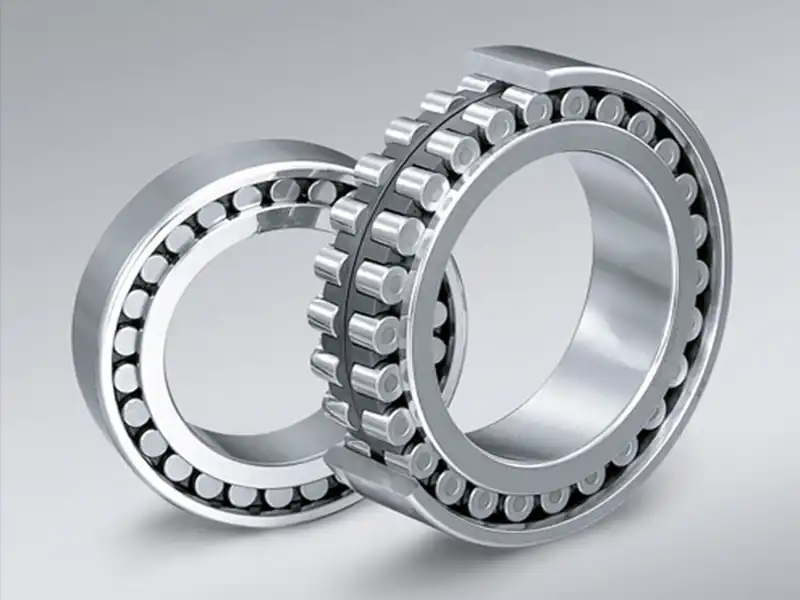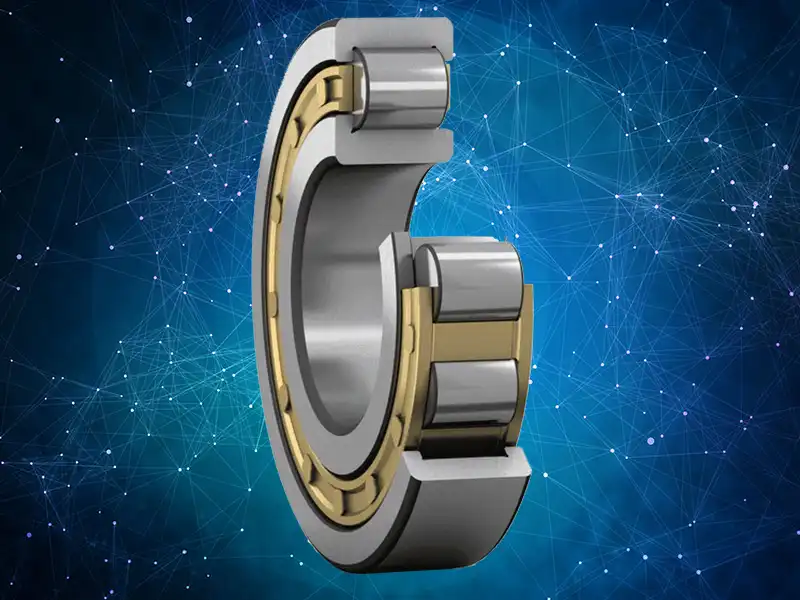How do Axial Cylindrical Roller Bearings Reduce Friction?
In the intricate world of mechanical engineering, axial cylindrical roller bearings stand as a testament to human ingenuity in reducing friction and enhancing mechanical efficiency. These sophisticated bearing systems represent a critical innovation in machinery design, offering unprecedented performance in high-load and precision-driven applications. By carefully managing the interaction between moving parts, axial cylindrical roller bearings minimize energy loss, reduce wear, and optimize mechanical performance across diverse industrial environments.

What Makes Axial Cylindrical Roller Bearings Unique in Friction Reduction?
Axial cylindrical roller bearings represent a pinnacle of mechanical engineering design, specifically engineered to manage axial loads while minimizing friction through their distinctive structural configuration. Unlike traditional bearing systems, these specialized components leverage precise geometric arrangements and advanced material sciences to create an optimal friction-reduction environment.
The fundamental mechanism of friction reduction in axial cylindrical roller bearings begins with their unique structural design. Cylindrical rollers are positioned precisely parallel to the bearing's axis, creating a distributed load-bearing surface that significantly differs from ball bearings or other conventional bearing types. This arrangement allows for multiple contact points, which effectively spreads mechanical stress and reduces localized friction zones.
The rollers themselves are manufactured with exceptional precision, typically utilizing high-grade steel or advanced composite materials that possess inherent low-friction properties. Each roller is meticulously crafted to maintain tight dimensional tolerances, ensuring minimal surface irregularities that could potentially increase friction. The smooth, uniform surface of these rollers enables them to roll with minimal resistance, creating a near-frictionless interaction within the bearing system.
Material selection plays a crucial role in friction reduction. Modern axial cylindrical roller bearings incorporate advanced metallurgical techniques and surface treatments that further minimize friction. Specialized heat treatments, such as carburizing or nitriding, enhance the surface hardness and create a low-friction layer that reduces molecular-level interactions between moving components.
Lubrication strategies represent another critical aspect of friction management in these bearing systems. Sophisticated lubricants are specifically designed to create an ultra-thin film between roller and race surfaces, preventing direct metal-to-metal contact. These lubricants are engineered with advanced additives that not only reduce friction but also provide thermal stability, corrosion protection, and extended operational life.
The geometric configuration of axial cylindrical roller bearings inherently promotes efficient load distribution. By arranging rollers in a precise, parallel manner, these bearings can handle substantial axial loads while maintaining minimal friction coefficients. This design allows for uniform stress distribution across the entire bearing surface, preventing localized wear and reducing energy consumption.
Precision manufacturing techniques further contribute to friction reduction. Computer numerical control (CNC) machining and advanced metrology ensure that each bearing component meets stringent tolerancing requirements. Microscopic surface treatments and super-finishing processes create near-perfect geometrical surfaces that minimize molecular-level interactions, thereby reducing friction at its most fundamental level.
How Do Design Specifications Impact Friction Performance in Axial Cylindrical Roller Bearings?

Design specifications represent a critical determinant in the friction performance of axial cylindrical roller bearings. Engineers must carefully balance multiple parameters to optimize friction reduction, considering factors such as roller diameter, length-to-diameter ratio, internal clearances, and surface finish.
The roller diameter directly influences friction characteristics. Larger diameter rollers distribute loads more effectively, reducing localized stress concentrations that can increase friction. Conversely, smaller diameter rollers offer higher rotational speeds but might introduce additional friction due to increased contact pressures. The optimal diameter depends on specific application requirements, necessitating sophisticated computational modeling and simulation techniques.
Length-to-diameter ratios emerge as another crucial design consideration. Longer rollers provide increased load-bearing capabilities but might introduce alignment challenges that could potentially increase friction. Shorter rollers offer enhanced rotational flexibility but might compromise load-handling capacity. Advanced finite element analysis allows engineers to determine the most appropriate ratio for specific operational environments.
Internal clearances represent a nuanced yet critical factor in friction management. Excessively tight clearances can introduce additional resistance and heat generation, while overly loose tolerances might compromise bearing stability. Precision engineering techniques enable the creation of bearing systems with microscopic clearances that balance mechanical performance and friction reduction.
Surface finish technologies have revolutionized friction performance in axial cylindrical roller bearings. Nano-level surface treatments, including diamond-like carbon (DLC) coatings and advanced ceramic surface modifications, can dramatically reduce friction coefficients. These treatments create ultra-smooth surfaces that minimize molecular interactions and provide exceptional wear resistance.
Material science innovations continue to push the boundaries of friction reduction. Advanced composite materials, including ceramic-hybrid designs and specialized polymer-infused metals, offer unprecedented low-friction characteristics. These materials can withstand extreme temperatures, resist chemical degradation, and maintain consistent performance across diverse operational conditions.
What Emerging Technologies Are Transforming Axial Cylindrical Roller Bearing Friction Management?

Emerging technologies are fundamentally reimagining friction management in axial cylindrical roller bearings, introducing revolutionary approaches that promise unprecedented efficiency and performance. Intelligent sensing technologies, advanced computational modeling, and nanotechnology are converging to create next-generation bearing systems.
Smart sensor integration represents a groundbreaking approach to real-time friction monitoring. Embedded micro-sensors can continuously track temperature, vibration, and microscopic wear patterns, providing instantaneous feedback about bearing performance. Machine learning algorithms analyze this data, predicting potential friction-related issues before they manifest, enabling proactive maintenance strategies.
Computational fluid dynamics (CFD) and advanced simulation technologies allow engineers to model friction behaviors with extraordinary precision. These digital twin technologies create virtual representations of bearing systems, simulating complex interactions under various operational conditions. By mapping friction responses across multiple scenarios, engineers can optimize design parameters with unprecedented accuracy.
Nanotechnology introduces microscopic interventions that promise revolutionary friction reduction. Nano-engineered lubricants containing molecular-level additives can create self-healing surface films that adapt to changing mechanical stresses. These intelligent lubricants modify their molecular structure in real-time, providing consistent low-friction performance across diverse operational environments.
Artificial intelligence and machine learning are transforming friction prediction and management. Advanced neural networks can analyze vast datasets, identifying subtle patterns that human engineers might overlook. These technologies enable the development of adaptive bearing systems that can dynamically adjust their friction characteristics based on real-time operational demands.
Quantum computing represents the next frontier in friction management research. By modeling complex molecular interactions at unprecedented computational scales, researchers can develop bearing designs that minimize friction at the most fundamental physical levels. These quantum simulations promise to unlock new understanding of friction mechanisms, potentially revolutionizing mechanical engineering.
Conclusion
Axial cylindrical roller bearings exemplify human engineering excellence in friction management. Through sophisticated design, advanced materials, and emerging technologies, these remarkable components continue to push the boundaries of mechanical performance.
Luoyang Huigong Bearing Technology Co., Ltd. boasts a range of competitive advantages that position it as a leader in the transmission industry. Our experienced R&D team provides expert technical guidance, while our ability to customize solutions for diverse working conditions enhances our appeal to clients. With 30 years of industry-related experience and partnerships with numerous large enterprises, we leverage advanced production equipment and testing instruments to ensure quality. Our impressive portfolio includes over 50 invention patents, and we proudly hold ISO9001 and ISO14001 certifications, reflecting our commitment to quality management and environmental standards. Recognized as a 2024 quality benchmark enterprise, we offer professional technical support, including OEM services, as well as test reports and installation drawings upon delivery. Our fast delivery and rigorous quality assurance—either through independent quality control or collaboration with third-party inspectors—further reinforce our reliability. With many successful collaborations domestically and internationally, we invite you to learn more about our products by contacting CHG at sale@chg-bearing.com or calling our hotline at +86-0379-65793878.
References
1. Hamrock, B.J., Fundamentals of Fluid Film Lubrication, McGraw-Hill, 2000
2. Dowson, D., History of Tribology, Professional Engineering Publishing, 1998
3. Höhn, B.R., et al., "Advanced Bearing Technologies for High-Performance Machinery", Journal of Engineering Tribology, vol. 225, 2011
4. Miyoshi, K., "Advances in Surface Engineering for Friction and Wear Reduction", NASA Technical Memorandum, 2006
5. Stachowiak, G.W., Batchelor, A.W., Engineering Tribology, Butterworth-Heinemann, 2013
6. Hutchings, I.M., Tribology: Friction and Wear of Engineering Materials, CRC Press, 1992
7. Stribeck, R., "Die wesentlichen Eigenschaften der Gleit- und Rollenlager", Zeitschrift des VDI, 1902
8. Tallian, T.E., Failure Atlas for Hertz Contact Machine Elements, ASME Press, 1992
9. Popov, V.L., Contact Mechanics and Friction, Springer, 2010
10. Czichos, H., Tribology: A Systems Approach to the Science of Friction, Lubrication and Wear, Elsevier, 2009

